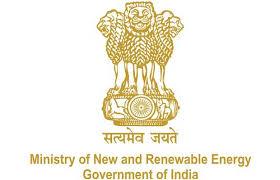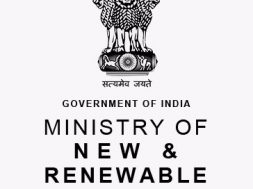
2.65 GW of Rooftop Solar capacity installed in residential sector: Union Power and New & Renewable Energy Minister – EQ
In Short : The statement indicates that 2.65 gigawatts (GW) of rooftop solar capacity has been installed in the residential sector. This suggests progress in the adoption of solar energy at the household level, contributing to the overall renewable energy capacity and supporting sustainability goals. Rooftop solar installations in residential areas help reduce reliance on traditional power sources and promote cleaner energy generation.
In Detail : More than Rs. 908 crores released as incentives to discoms for promoting Rooftop Solar Installations
The Union Minister for New & Renewable Energy and Power has informed that the Ministry of New and Renewable energy is implementing Rooftop Solar (RTS) Programme Phase-II, wherein Central Financial Assistance (CFA) is being provided for installation of RTS in residential sector. The Programme envisages installation of 4 GW of RTS capacity in the residential sector, and has been extended till 31.03.2026. Against the target of 4 GW capacity, MNRE has allocated 3.57 GW capacity to various implementing agencies. Against the allocated capacity, an aggregate capacity of 2.65 GW has been installed in the residential sector so far.
The DISCOMs are designated as implementing agencies of Rooftop Solar Phase-II. Certain concerns have been expressed regarding loss of revenue from the paying consumers, however, the DISCOMs also recognize the additional benefits of Rooftop Solar, including avoided cost for the generation, transmission and distribution losses and the compliance of renewable purchase obligation.
Ministry of Power vide its gazette notification dated 20.08.2023 has specified the minimum share of consumption of non-fossil sources (Renewable Energy) by designated consumers in respect of electricity distribution licensee and other designated consumers who are open access consumers or captive users to the extent of consumption of electricity from sources other than distribution licensee as a percentage of their total share of energy consumption. The notification includes a Distributed Renewable Energy (DRE) component and the details are given below.
The year wise percentage share of Distributed Renewable Energy (DRE) component and these RE sources specified as minimum consumption of non-fossil fuel sources (Renewable Energy) is indicated in the table below.
| S. No. |
Year |
Wind renewable energy | Hydro renewable energy | Distributed renewable energy* | Other renewable energy | Total renewable energy |
| (1) | (2) | (3) | (4) | (5) | (6) | (7) |
| 1 | 2024-25 | 0.67% | 0.38% | 1.50% | 27.35% | 29.91% |
| 2 | 2025-26 | 1.45% | 1.22% | 2.10% | 28.24% | 33.01% |
| 3 | 2026-27 | 1.97% | 1.34% | 2.70% | 29.94% | 35.95% |
| 4 | 2027-28 | 2.45% | 1.42% | 3.30% | 31.64% | 38.81% |
| 5 | 2028-29 | 2.95% | 1.42% | 3.90% | 33.10% | 41.36% |
| 6 | 2029-30 | 3.48% | 1.33% | 4.50% | 34.02% | 43.33% |
*For hilly and North-Eastern States/Union Territories, namely Arunachal Pradesh, Assam, Manipur, Meghalaya, Mizoram, Nagaland, Sikkim, Tripura, Jammu & Kashmir, Ladakh, Himachal Pradesh and Uttarakhand, the distributed renewable energy component shall be half of that given in the Table and the remaining component for these States shall be included in the other renewable energy sources.
The distributed renewable energy component shall be met only from the energy generated from renewable energy projects that are less than 10 MW in size and which inter alia include Rooftop Solar installations.
DISCOMs are being encouraged to promote rooftop solar installations through achievement linked incentives for the incremental rooftop solar capacity added in their operating area under the RTS Programme. So far, Ministry of New and Renewable Energy has released Rs 908.1 Crores as an incentive to various DISCOMs. These incentives are being provided to enable the DISCOMs to create an enabling ecosystem for expeditious implementation of RTS projects in their area. The tasks to be taken in this regard include but not be limited to providing dedicated manpower for RTS implementation, rooftop assessment, bid process management to empanel system integrators along with rates, technical studies, upgradation in ERP system/components, providing time bound services to RTS consumers, inspection and online monitoring of RTS plants, online database management of commissioned capacity, consumer awareness and publicity, ensuring availability of net-meters, providing grid connectivity, capacity building of its officers/staff etc. The details of incentives released to various DISCOMs state-wise are given below.
Total incentives released under Phase-II of Rooftop Solar Program as on 30.11.2023
| S. No. | State/UTs | Total incentives released under Phase-II Programme (In crores) |
| 1 | Andaman & Nicobar | 0.0 |
| 2 | Andhra Pradesh | 5.6 |
| 3 | Arunachal Pradesh | 0.0 |
| 4 | Assam | 4.9 |
| 5 | Bihar | 3.3 |
| 6 | Chandigarh | 0.7 |
| 7 | Chhattisgarh | 4.5 |
| 8 | DNH &DD | 0.0 |
| 9 | Goa | 0.0 |
| 10 | Gujarat | 499.3 |
| 11 | Haryana | 9.8 |
| 12 | Himachal Pradesh | 3.5 |
| 13 | J& K | 0.0 |
| 14 | Jharkhand | 3.0 |
| 15 | Karnataka | 12.1 |
| 16 | Kerala | 22.6 |
| 17 | Ladakh | 0.0 |
| 18 | Lakshadweep | 0.0 |
| 19 | Madhya Pradesh | 16.2 |
| 20 | Maharashtra | 100.9 |
| 21 | Manipur | 0.0 |
| 22 | Meghalaya | 0.0 |
| 23 | Mizoram | 0.2 |
| 24 | Nagaland | 0.0 |
| 25 | Delhi | 13.5 |
| 26 | Odisha | 0.6 |
| 27 | Puducherry | 0.0 |
| 28 | Punjab | 34.3 |
| 29 | Rajasthan | 101.5 |
| 30 | Sikkim | 0.0 |
| 31 | Tamil Nadu | 20.5 |
| 32 | Telangana | 34.4 |
| 33 | Tripura | 0.0 |
| 34 | Uttarakhand | 0.0 |
| 35 | Uttar Pradesh | 6.2 |
| 36 | West Bengal | 10.2 |
| Total | 908.1 |
Several States / UTs are undertaking extensive IEC campaigns for promotion of rooftop solar in their areas.
This information has been given by the Union Minister for New & Renewable Energy and Power Shri R. K. Singh, in written replies to two separate questions, in Rajya Sabha today, December 12, 2023.












